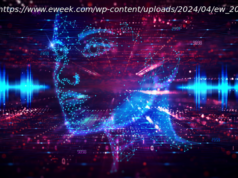Minecraft? In The Reg? Call the Brigadier!
While the world may have been focused on the acid reflux of the Windows 10 October 2018 release, it wasn’t the only news out of Redmond in the past 7 days. It’s time for the Microsoft round-up.
While the eyes of Windows fans were on version 1809 of the troubled operating system, another milestone has now been reached. The original Creators Update (version 1703) has finally reached the end of the line as support came to a halt.
Education and Enterprise editions get one more year of servicing love from Microsoft, but for the rest of you… that’s it. It’s time to accept the inevitable and upgrade. Moving to 1709 (the Fall Creators Update) will get you supported until April 2019, but lets face it: taking a deep breath and tombstoning into 1809 (aka the Fail update) is what Microsoft would really like you to do.
Having distracted AI programmers with the open-sourcing of its model-based machine learning framework, Infer. NET, Microsoft emitted a fresh version of its other machine learning toolset in the form of version 0.6 of ML. NET.
ML. NET takes a more traditional approach to machine learning compared to Infer. NET, requiring devs to tweak their patterns to fit its models. While still two separate products, the ML. NET team have given their colleagues a heads-up to the effect that they intend to make Infer. NET “part of the ML. NET family” which, to be fair, is really where it belongs.
The new release of the open source framework sees the beginning of deprecation for the existing LearningPipelineAPI in the favour of new APIs for building and consuming models. It’s a big change, as the old API shuffles off into the ML. Legacy namespace, but will allow the ML. NET team to deal with longstanding issues and provide devs with principles and naming that will feel familiar to users of the likes of Apache Spark.
As well as the usual trumpeting of performance increases (an ambitious 100x jump for some scenarios is mentioned), ML. NET can now get predictions from Open Neural Network Exchange Format (ONNX) models. The goal of ONNX is to create an interoperable model to allow models trained in one framework (for example, TensorFlow) to be used in another (like, er, maybe ML. NET?)
Support, however, is limited to ONNX 1.2 in this release (1.3 made its debut in September) but its arrival will be welcomed by ML boffins.
Oz-ure users rejoice! The Azure Australia Central and Central 2 regions have acquired support for Azure Backup, which will give users an alternative to managing the things on-premises. Assuming you trust the cloudy service to securely hold on to you precious backups.
For its part, Microsoft promises the Australian regions will fall under its SLA of at least 99.9 per cent availability.
We would love to be able to tell you how much this southern hemisphere back-up love is going to cost you, but at the time of writing, Azure’s pricing team had yet to flick the switch. So, better hold on to those tapes a little while longer, OK?
While the sharing of 60,000 patents to « protect Linux » left some in spasms of delight as others were somewhere more sniffy with suspicion, Microsoft began to quietly open up the code behind one of its more popular titles. No, not Windows. Minecraft.
The team in Stockholm have dumped the Java code for the block-building game’s command parser and dispatcher into GitHub and made it freely available under the MIT licence. Thus if you want a vaguely clunky command parser in your game, step right up!
Of course, what the devs really want is for the community to get involved and make the thing “extremely useful one day” because, let’s face it, the sooner we get the target audience trained up on using a command line rather than all this damnably new-fangled graphical user interface nonsense, the better the world will be. ®
Sponsored: Following Bottomline’s journey to the Hybrid Cloud






